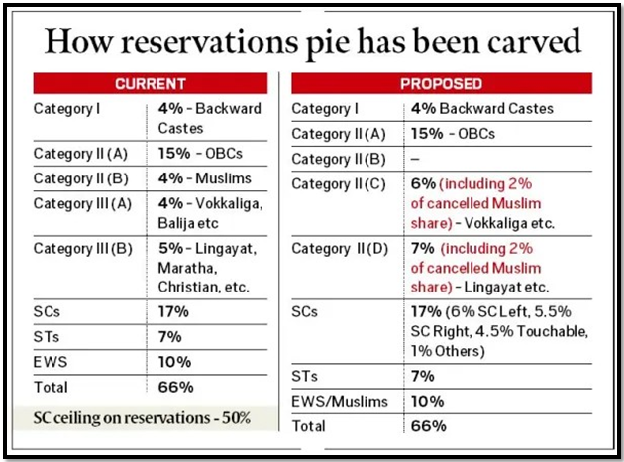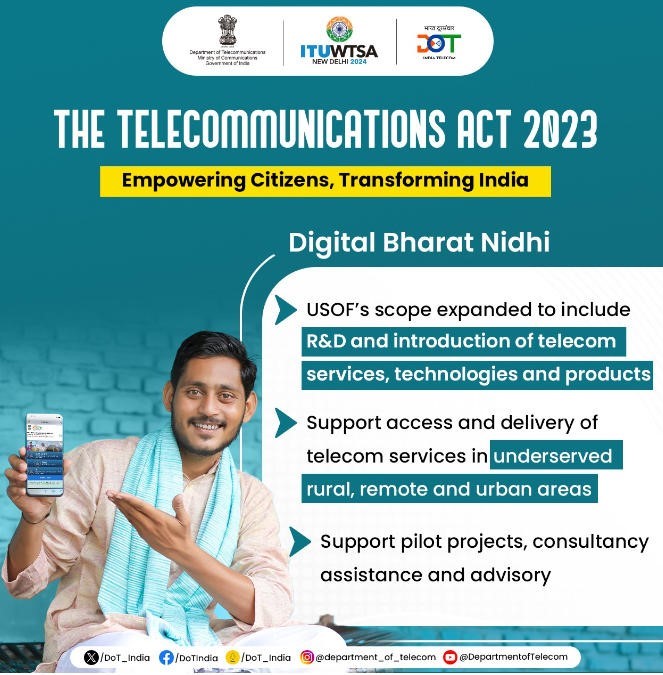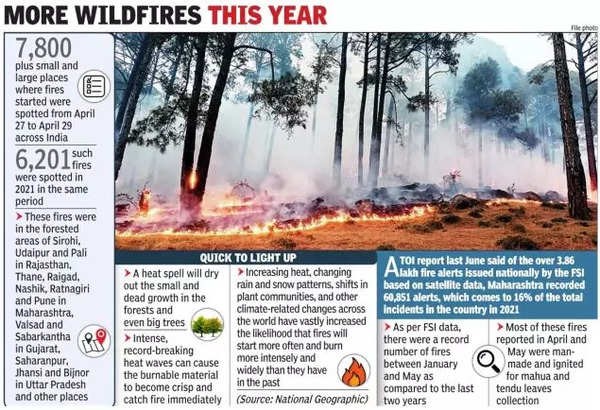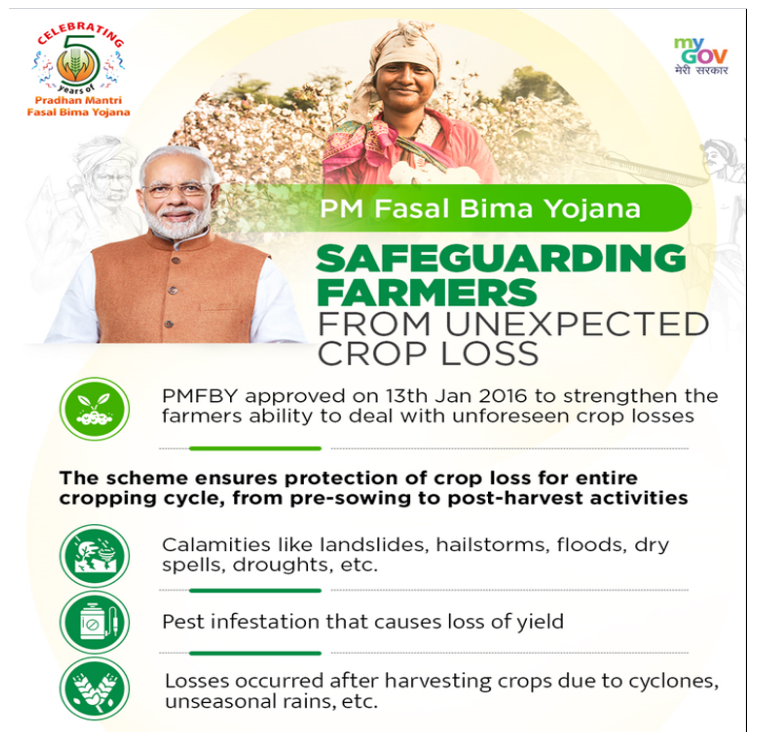Sub-Caste Reservation for SC/STs: A Critical Analysis
CONTEXT: Supreme Court’s pending decision on sub-caste reservation for SC/STs and there is a need for justification on both legal and academic grounds of it.
Dr. B.R. Ambedkar’s Policy Framework for Uplifting Untouchables
- There are three policy instruments:
- Legal safeguards against caste discrimination
- Reservation in legislature, jobs, and education
- Measures to improve ownership of capital assets (land, businesses) and education levels
Rationale: Addressing historical denial of rights and social exclusion of untouchables as a whole
- Interconnection Between the Three Measures
- Legal safeguards and reservations ensure fair share in the present
- Economic/education empowerment measures address consequences of past discrimination
- All three measures are complementary, not substitutes
Limitations of Reservation and Need for Economic Empowerment
- Reservations address discrimination in the present, but have limitations
- Lack of capital assets and education hinder utilization of reservation benefits
- Policy focus needed on individuals lacking capital and education, not sub-castes
Why Sub-Caste Reservation May Not Be the Answer
- Low participation in job reservation may be due to low education, not sub-caste discrimination
- Improving capital ownership and education levels is a better solution
A Better Alternative: Individual Focus Policy
- Enhance capabilities of SC individuals for education and job opportunities
- Focus on those lacking capital assets and education, not sub-castes
Digital Bharat Nidhi - Bridging the Rural Digital Divide
CONTEXT: The Department of Telecommunications (DoT) released draft rules for DBN in July 2024.
Background:
- Lack of access to affordable and reliable telecom services in rural areas is a major hurdle for equitable socio-economic development in India.
- The Universal Service Obligation Fund (USOF), established in 2003, aimed to bridge this gap by funding telecom network expansion in underserved areas.
- However, USOF faced criticism for underutilization of funds.
DBN will replace USOF with a broader mandate to improve rural connectivity and promote technological advancement.
Key Features of DBN:
- Funding: Contributions from telecom companies will be deposited in the Consolidated Fund of India first and then transferred to DBN.
- Focus Areas: Digital Bharat Nidhi will focus on-
- Supporting universal service by providing telecom access in underserved rural, remote, and even urban areas.
- Funding research & development (R&D) for innovative telecom services, technologies, and products.
- Supporting pilot projects, consultancy services, and advisory support to improve connectivity.
- Facilitating the introduction of next-generation telecom technologies in underserved areas.
- Promoting affordability of telecom services in these areas.
- Encourage startups in the telecom sector and domestic manufacturing of telecom equipment.
- Bridge the digital gender divide by providing targeted access to underserved groups like women and persons with disabilities.
Implementation:
- A central administrator will manage DBN funds.
- “DBN implementers” will be selected through bidding for project execution.
- Funding modalities will be flexible, including full funding, partial funding, co-funding, and risk mitigation support.
- DBN-funded networks must be open and non-discriminatory.
Advantages of DBN over USOF:
- Wider scope encompassing R&D, pilot projects, and technology development.
- Focus on affordability and bridging the digital gender divide.
- Potentially better utilization of funds through a flexible approach.
Challenges:
- Effective implementation and efficient project selection.
- Ensuring transparency and accountability in fund allocation.
- Encouraging private sector participation in underserved areas.
Expected Outcomes:
- Improved rural telecom connectivity.
- Enhanced access to government services, education, and healthcare in rural areas.
- Growth of the digital economy and creation of rural jobs.
Fostering innovation in the Indian telecom sector.
Arctic Wildfires and Their Impact on Global Warming
CONTEXT: A wildfire burt in Arctic for the third time in past five years.
Background:
Wildfires are a natural part of the Arctic ecosystem, but their frequency and intensity have significantly increased in recent years.
This rise is primarily driven by global warming, causing a vicious cycle that accelerates climate change.
Why are Arctic Wildfires Worsening?
- Rapid Warming: The Arctic is warming at an alarming rate, roughly four times faster than the global average. While the global average temperature has increased by at least 1 degree Celsius above pre-industrial levels, the Arctic has become on average around 3 degrees Celsius warmer than it was in 1980.
- Increased Lightning: Warmer temperatures lead to more frequent lightning strikes. A study by the University of Washington suggests a strong link between reduced Arctic sea ice and increased lightning activity, with lightning strikes in the Arctic tripling between 2010 and 2020.
- Disrupted Jet Stream: Rising temperatures weaken the polar jet stream, a high-altitude wind current that influences weather patterns. A weaker jet stream can lead to stagnant weather patterns and prolonged heatwaves, further drying out the Arctic and increasing fire risk.
Impact on Global Warming:
- Greenhouse Gas Emissions: Wildfires release heat-trapping gases like CO2 into the atmosphere. In June 2023 alone, Arctic wildfires emitted 6.8 mega-tonnes of carbon, the third highest monthly total of the past two decades.
- Permafrost Thaw: A more significant threat lies beneath the Arctic surface – permafrost. This permanently frozen ground stores massive amounts of carbon, estimated at 1,700 billion metric tons, which is 51 times the annual global fossil fuel emissions in 2019.
Importance:
The Copernicus Climate Change Service (C3S) monitors wildfire activity and emissions in the Arctic. Wildfires remove the insulating layer of vegetation and soil, accelerating permafrost thaw. As permafrost thaws, the trapped organic material decomposes and releases methane and CO2, further accelerating global warming.
Wildfires also cause air quality issues and disrupt ecosystems in the Arctic region, impacting human and animal populations.
Karnataka Targets Carcinogens in Street Food
CONTEXT: Karnataka government crackdown on cancer-causing agents used in popular street food items.
Carcinogens Found:
- Public complaints of stomach upset and other health problems after consuming street food raised concerns.
- The Karnataka Food Safety Department identified and banned the use of artificial coloring agents with potential carcinogenic properties in various street food items.
- Pani puri and shawarma samples tested positive for these harmful additives.
Specific agents identified include:
- Tartrazine: Linked to potential cancer risk, diabetes, and kidney issues.
- Sunset Yellow: Potential carcinogen.
- Rhodamine B: Industrial dye, harmful to eyes and respiratory system, possible carcinogen.
- Brilliant Blue: Potential health complications.
Department’s Actions:
- Banned the use of these coloring agents in gobi manchurian, cotton candy, chicken kababs, pani puri, and shawarma.
- Increased inspections and legal action against Food Business Operators (FBOs) found using them.
Legal Consequences:
- Stringent two-step sampling process for legal action.
- Confirmation testing by Central Food Technological Research Institute (CFTRI).
- Guilty FBOs face fines up to Rs. 10 lakh and imprisonment under the Food Safety Act.
284 FBOs booked so far for selling food containing these carcinogens.
Pradhan Mantri Fasal Bima Yojana (PMFBY): A Shield for Indian Farmers
CONTEXT: Crop insurance coverage drops in FY24 as 4 top insurers cut exposure. Gross direct premium underwritten by insurers declined by 4.17%
The Pradhan Mantri Fasal Bima Yojana (PMFBY) is a government-sponsored crop insurance scheme designed to provide financial security to farmers against crop losses due to unforeseen events. Here’s a breakdown of the scheme’s key features, terms, and coverage:
Crops Covered:
PMFBY can cover almost any crop for which yield data exists and is grown during the notified season in a designated area.
The specific crops and seasons are notified by state governments.
Who Can Enroll?
- Loanee Farmers: Enrollment is compulsory for farmers who avail crop loans or Kisan Credit Cards (KCC) for notified crops.
- Non-Loanee Farmers: Participation is voluntary for farmers who don’t have loan requirements but have an insurable interest in the crop.
Types of Coverage:
- Standing Crop Cover (Sowing to Harvesting): This covers yield losses arising from natural calamities like drought, floods, pests, and diseases.
- Localized Calamities: Coverage for losses due to hailstorms, landslides, and inundation in specific areas within the notified region.
- Post-Harvest Losses (Optional): Protection against damage during drying for up to 14 days after harvest for specific perils like cyclone or unseasonal rains.
Indemnity Levels and Premiums:
- Three indemnity levels (70%, 80%, and 90%) are available, corresponding to the crop risk in the area. Farmers can choose their preferred level.
- The government and the participating state share a significant portion of the premium, making it highly affordable for farmers. The maximum farmer premium is:
- 2% for Kharif food & oilseed crops
- 5% for Rabi food & oilseed crops
- 5% for annual commercial/horticultural crops
Other Key Features:
- Unit of Insurance: The unit for assessing losses varies depending on the crop and can be village/village panchayat level or higher.
- Claim Settlement: Claims are assessed by designated agencies and settled promptly.
- Seasonality Discipline: Sowing within the notified window is mandatory for claim eligibility.
- Compulsory for Loanee Farmers: Loanee farmers must enroll to secure credit, promoting scheme participation.
Benefits of PMFBY:
- Provides financial support to farmers suffering crop losses, ensuring some level of income security.
- Encourages farmers to adopt innovative practices and invest in agriculture due to reduced risk.
- Promotes financial inclusion by facilitating loan availability for insured farmers.
- Contributes to food security by stabilizing agricultural production.
Limitations to Consider:
- The scheme might not cover new or rare crops due to lack of yield data.
- Basis risk exists, as localized events within a large unit area might not trigger payouts.
- Timeliness of claim settlements can be an issue in some cases.






